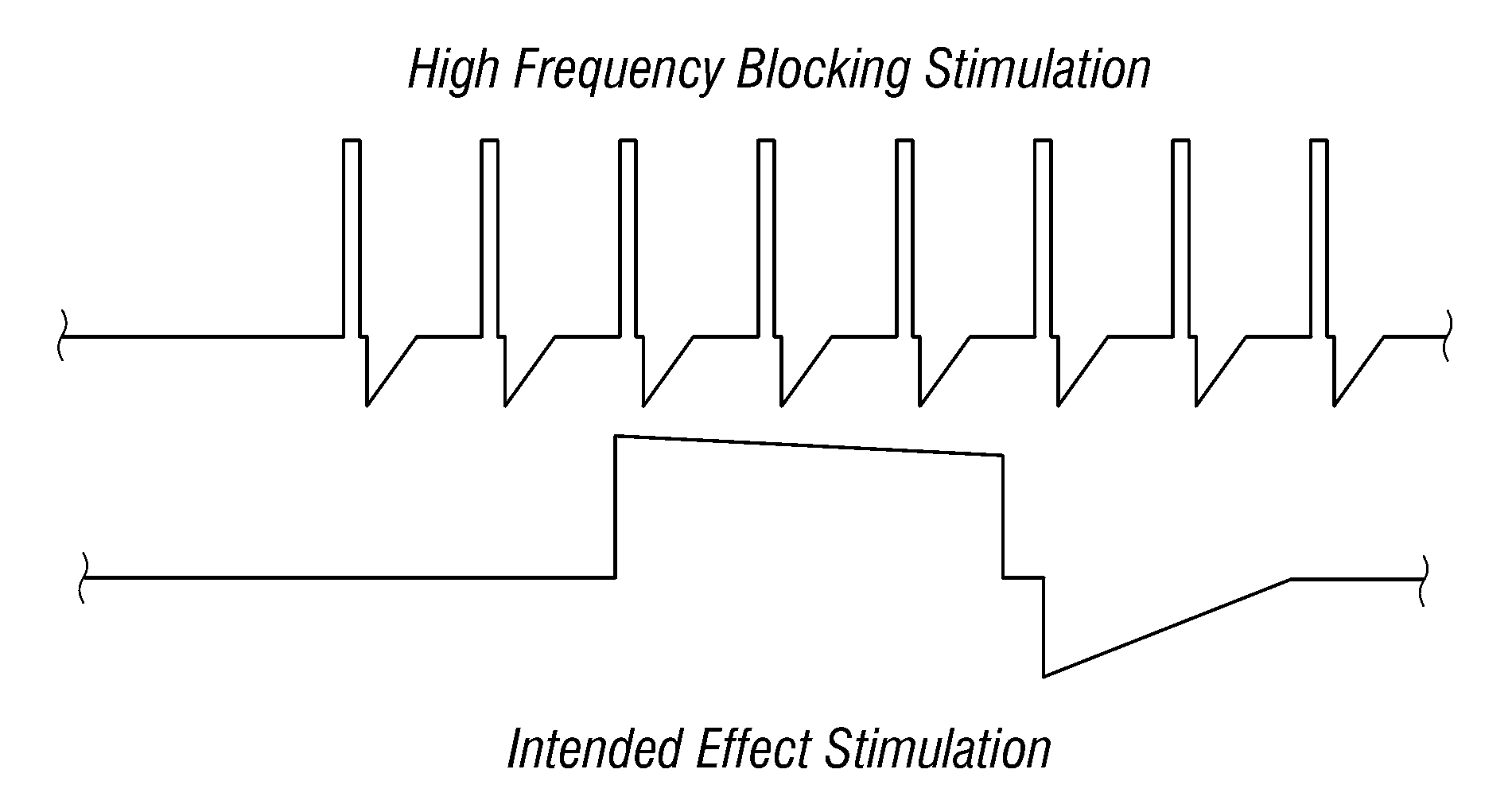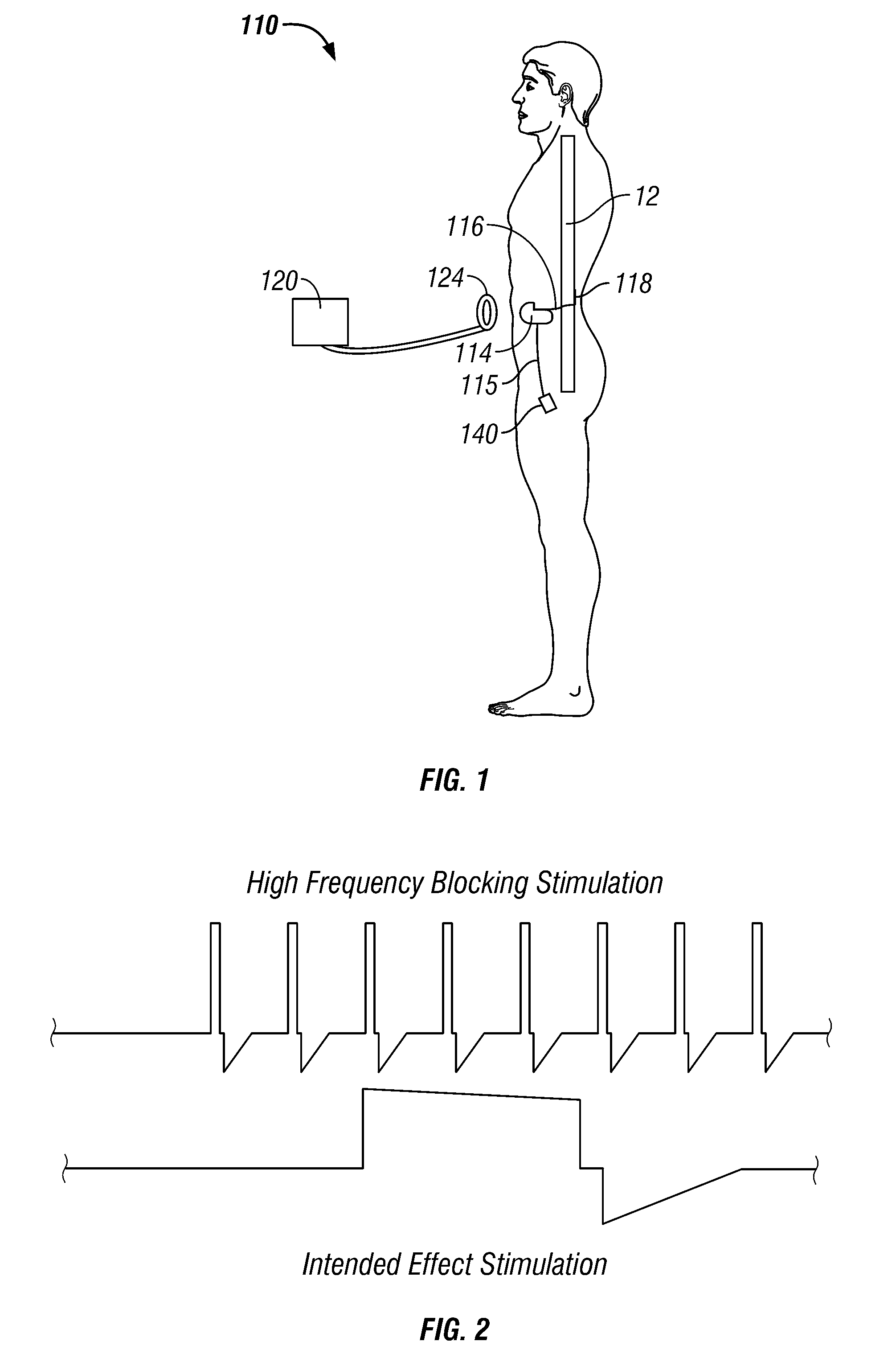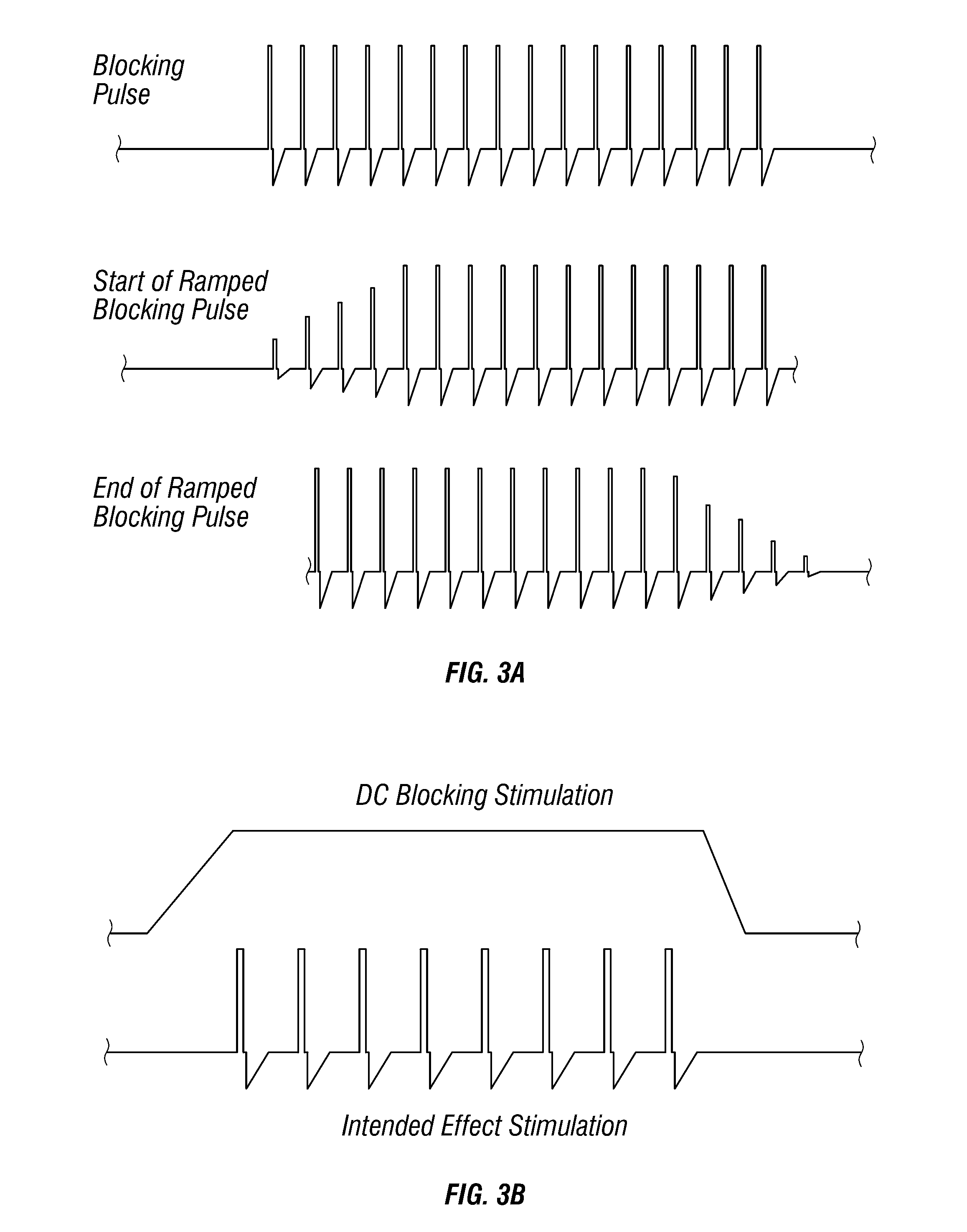Therapeutic method with pain relief
a technology of electrical excitability and therapeutic methods, applied in the field of therapy with pain relief, can solve the problems of inability to pass urine or fecal matter beyond the sphincter, undesired co-contraction of sphincter or disagreeable sensation or reverse peristalsis, and other problems, to achieve the effect of preventing action potentials
- Summary
- Abstract
- Description
- Claims
- Application Information
AI Technical Summary
Benefits of technology
Problems solved by technology
Method used
Image
Examples
Embodiment Construction
[0039] Evidence, from stimulation of the brain for tremor and other symptoms of Parkinson's disease, indicates that high frequency stimulation keeps neurons depolarized, and hence incapable of causing an action potential. See A. L. Benabid et al., Long-Term Suppression of Tremor by Chronic Stimulation of the Ventral Intermediate Thalamic Nucleus, the Lancet, vol. 337, 1991, pp. 403-406. Accordingly, the therapies of deep brain stimulation to block tremor and to block neuronal pathways that prevent desired volitional movements (freezing. akinesia, bradykinesia) often use high frequency stimulation. For instance, commonly assigned U.S. Pat. Nos. 5,716,377 and 5,833,709 disclose such systems and methods and are incorporated herein by reference. As used herein, the phrase “high frequency stimulation” refers to electrical stimulation of at least approximately 100-120 Hz, while “low frequency stimulation” refers to electrical stimulation of less than approximately 100 Hz.
[0040]FIG. 1 is ...
PUM
 Login to View More
Login to View More Abstract
Description
Claims
Application Information
 Login to View More
Login to View More - R&D
- Intellectual Property
- Life Sciences
- Materials
- Tech Scout
- Unparalleled Data Quality
- Higher Quality Content
- 60% Fewer Hallucinations
Browse by: Latest US Patents, China's latest patents, Technical Efficacy Thesaurus, Application Domain, Technology Topic, Popular Technical Reports.
© 2025 PatSnap. All rights reserved.Legal|Privacy policy|Modern Slavery Act Transparency Statement|Sitemap|About US| Contact US: help@patsnap.com



